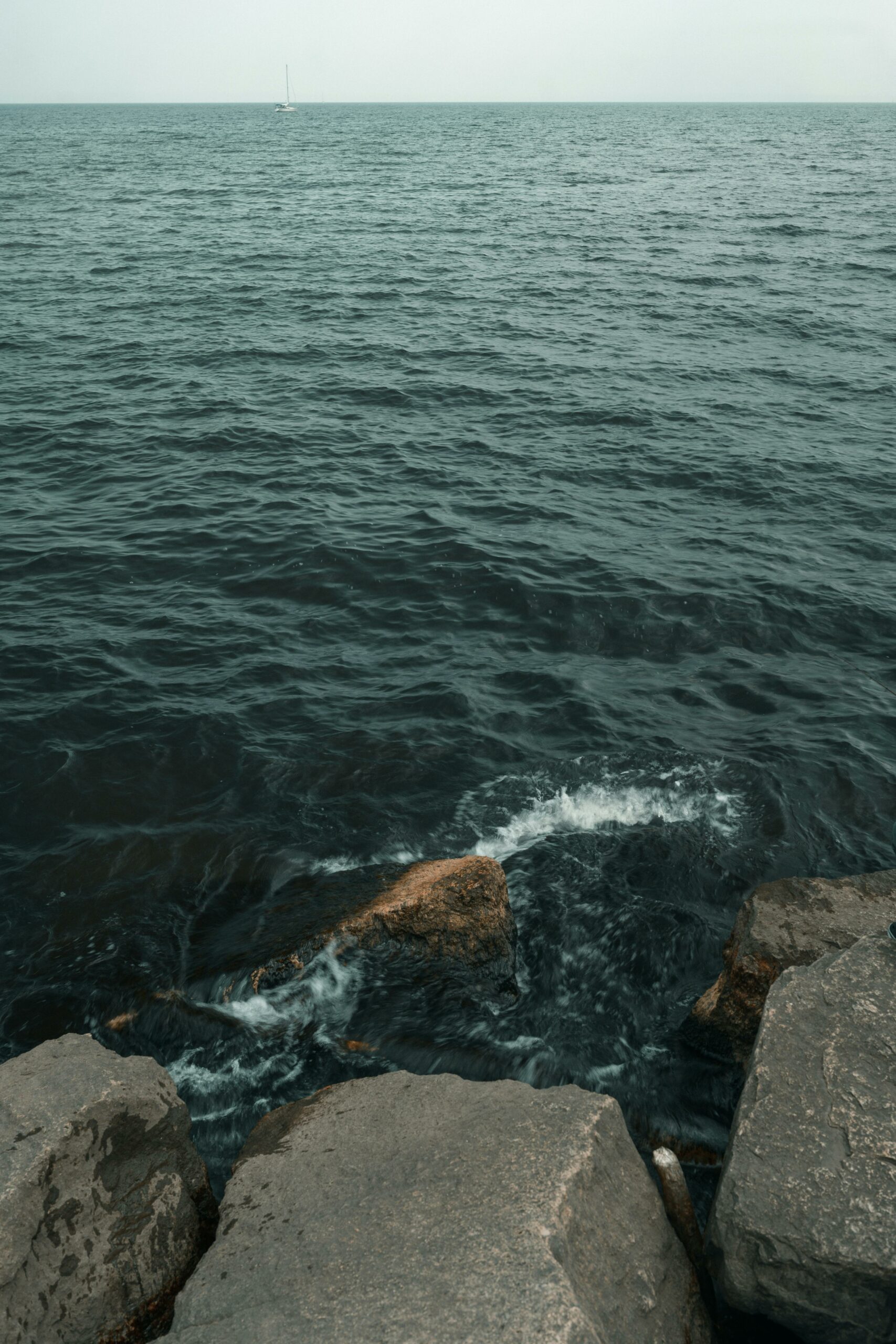High Tide In Duxbury: Discover The Secrets Behind Coastal Swells and High Tide in Duxbury is an intriguing topic that captures the essence of nature’s rhythmic dance along the picturesque Duxbury coastline. Ever wondered why the high tide in Duxbury brings such dramatic changes to the shoreline? Or what mysterious forces drive these powerful coastal swells? This article dives deep into the secrets behind the tide patterns in Duxbury Bay, revealing fascinating insights that every beach lover and local should know.
The high tide phenomenon in Duxbury isn’t just about water levels rising and falling; it’s a complex interaction of the moon’s gravitational pull, local geography, and even wind patterns. Did you know that some of the largest tidal surges in Duxbury happen during certain times of the year, creating spectacular views and sometimes even affecting local wildlife? Whether you’re a keen surfer chasing the perfect wave, a photographer looking for that stunning sunset shot over the swelling sea, or simply curious about how tides influence the marine ecosystem in Duxbury, understanding these coastal secrets is essential.
Stay with us as we unravel the captivating science behind the high tide in Duxbury Bay, explore the impact of seasonal swells, and share tips on how to safely enjoy the beach during peak tides. By the end of this read, you’ll be equipped with the knowledge to predict the best times for coastal adventures and appreciate the powerful forces shaping this beloved British seaside town. Ready to uncover the mysteries of Duxbury’s coastal tides? Let’s plunge right in!
Unveiling the Science: How High Tide in Duxbury Shapes Coastal Ecosystems
The coastal town of Duxbury, Massachusetts, might not be the first place comes to mind when you think about powerful natural forces. But the high tide in Duxbury plays a huge role in shaping its coastal ecosystems, influencing everything from marine life habitats to erosion patterns along its sandy shores. Understanding how these tidal swells work gives us a glimpse into the quiet but complex dance between ocean and land that has been going on for centuries.
What Causes High Tide in Duxbury?
High tides are caused primarily by the gravitational pull of the moon and the sun on Earth’s oceans. In Duxbury, like many other coastal areas, this means the water level rises and falls roughly twice a day, affected by the moon’s phases and its position relative to Earth.
- The moon’s gravity pulls water towards it, creating a bulge in the ocean surface.
- When Duxbury faces this bulge, it experiences high tide.
- The sun’s gravity also affects tides but to a lesser extent.
- When the sun, moon, and Earth align, the tides are especially high (spring tides).
- Conversely, when the moon and sun are at right angles, tides are lower (neap tides).
These cyclical changes don’t just change the water levels but also influence coastal environments profoundly.
How High Tide Shapes Duxbury’s Coastal Ecosystem
The ebb and flow of tides in Duxbury does more than just change the scenery; it orchestrates a range of ecological processes essential for the health of coastal life.
- Nutrient Distribution – High tides bring in nutrients from the ocean that mixes with the estuarine waters, feeding plants and tiny organisms.
- Habitat Formation – Salt marshes and tidal pools are regularly flooded by high tides, creating habitats for crabs, fish, and migratory birds.
- Sediment Transport – Tides move sand and mud, shaping beaches and mudflats, which are critical for various species.
- Water Quality Regulation – The regular flushing of water helps reduce pollution accumulation, maintaining cleaner coastal waters.
Historical Context: Duxbury’s Relationship with the Sea
Duxbury’s history is deeply tied to its coastline and tides. Settled in the early 1600s, the town’s economy has long depended on the sea. Fishermen, clammers, and shipbuilders all relied on the predictable tides for their livelihoods.
- In the 1800s, Duxbury was a hub for shipbuilding, with tides affecting when ships could be launched.
- Salt marshes flooded by high tides were harvested for salt hay, an important agricultural product.
- Coastal defences have been built over time to protect against erosion caused by storm surges amplified by high tides.
This long-standing interaction between people and tides shows how the natural rhythm of the ocean has shaped not just the environment, but the community as well.
Comparing High Tide Effects: Duxbury vs Other Massachusetts Coastal Towns
While many Massachusetts towns experience tides, Duxbury’s unique geography means its tidal impact differs in some ways:
| Feature | Duxbury | Provincetown | Boston |
|---|---|---|---|
| Average tidal range | About 9 feet (2.7 meters) | Around 7 feet (2.1 meters) | Roughly 10 feet (3 meters) |
| Coastal ecosystem type | Salt marshes, sandy beaches | Sandy beaches, dunes | Urbanised waterfront, mudflats |
| Dominant tidal impact | Nutrient-rich estuaries | Beach erosion and dune shifting | Tidal flooding in urban areas |
| Human interaction | Fishing, clamming, conservation | Tourism and recreation | Port activities, flood control |
This comparison highlights how tide effects can vary even within the same region, influenced by local geography and human activity.
Practical Examples: How Locals Experience High Tide in Duxbury
For residents and visitors, the high tide isn’t just a scientific phenomenon; it affects daily life in several ways:
- Boating and Fishing: Launching boats is often timed with high tide to avoid shallow areas.
- Beachcombing: The best shells and marine life sightings happen just after high tide recedes.
- Bird Watching: Migratory birds feed in the tidal pools formed at high tide’s retreat.
- Flood Awareness: Some coastal properties need to prepare for occasional flooding during spring tides or storms.
Locals have learned to read the tide tables as a natural calendar that guides their activities.
Key Takeaways About High Tide in Duxbury
- High tides in Duxbury are mainly driven by lunar and solar gravitational forces.
- These tides shape the coastal ecosystem by distributing nutrients, creating habitats, and moving sediments.
- The town’s history and economy have been closely linked to
Top 7 Fascinating Facts About Duxbury’s High Tide Patterns You Didn’t Know
For those who lives in or visit Duxbury, Massachusetts, the coastal town’s tides are more than just a twice-daily event. The high tide in Duxbury plays a crucial role shaping its beaches, marine life, and local culture. Yet, many people unaware of the deeper stories and quirks behind these coastal swells. From unique geological factors to historical records, Duxbury’s high tide patterns hold some fascinating secrets you probably didn’t know. Let’s dive into the top 7 facts about Duxbury’s high tide that might surprise even longtime locals.
1. The Tides in Duxbury Are Influenced By More Than The Moon
Most folks know the moon affect tides, but in Duxbury, it’s not just the lunar pull at work. The shape of the coastline, local underwater topography, and even wind patterns significantly changes how high the tide rises. For example, the bay’s narrow channels funnel water in ways that makes the tide come higher and faster than in nearby towns. So, when you watch the tide roll in, remember that it’s a complex dance between celestial bodies and earthly features.
2. Duxbury Experiences Semi-Diurnal Tides – Twice Daily Highs and Lows
Unlike some places that have one high tide and one low tide daily, Duxbury has what called semi-diurnal tides. That means there are two high tides and two low tides approximately every 24 hours. The time between these highs and lows changes slightly every day due to the moon orbiting the Earth. This pattern is typical for the New England coast but still worth noting because it affects everything from fishing schedules to beachcombing opportunities.
3. Historical Tide Records Date Back Over 150 Years
Duxbury’s high tide patterns have been recorded meticulously for over a century. Early settlers and maritime communities kept logs to predict safe harbouring and shipping schedules. These records now provide valuable data to scientists studying long-term sea level changes and climate impacts. In fact, comparing old tide charts to today’s can show how the coastline and tidal heights have slowly shifted over time.
4. The Highest Tides Occur During Spring Tides, Not In Spring Season
It’s easy to assume spring tides happen in spring, but they actually refer to the tides with the greatest range between high and low, occurring twice a month. This happens when the sun, moon, and Earth align during full and new moons, amplifying gravitational forces. In Duxbury, spring tides can cause the highest water levels, sometimes flooding low-lying areas and reshaping sandbars. These tides are critical for local fishermen and anyone interested in coastal ecology.
5. Duxbury’s Tidal Range Varies Seasonally
While the tidal pattern stays semi-diurnal year-round, the actual height difference between high and low tides changes with the seasons. During winter months, tides tend to be higher due to stronger storms and changes in atmospheric pressure. Conversely, summer tides are generally milder. This seasonal variation affects everything from boating safety to the types of plants and animals that thrive along the shore.
6. Coastal Swells and Wind Can Dramatically Affect Tide Levels
Besides gravitational forces, weather conditions play a big role in how tides look from day to day. Strong onshore winds can push water further inland, making the high tide seem much higher than predicted. Similarly, storm surges during hurricanes or nor’easters temporarily raise tide levels. In Duxbury, residents must be aware of these factors, especially during storm season when flooding risk increases.
7. The Tides Shape Local Ecosystems and Human Activities
Duxbury’s high tide patterns aren’t just a natural wonder; they actively shape local life. The tidal movements create rich tidal pools, expose mudflats for bird feeding, and influence fish migration. For example:
- Shellfish beds thrive in the intertidal zone, which is exposed during low tide and submerged at high tide.
- Kayakers and paddleboarders use tide charts to plan trips when water levels are safest.
- Beachcombers know the best times to find washed-up treasures are just after the highest tides.
These patterns also dictate when local festivals or beach clean-ups are scheduled to avoid tide hazards.
Quick Facts Table: Duxbury High Tide Essentials
| Fact | Detail |
|---|---|
| Tide Type | Semi-diurnal (2 highs, 2 lows daily) |
| Highest Tides | During spring tides (full and new moons) |
| Seasonal Variation | Higher tides in winter, lower in summer |
| Historical Data Available | Over 150 years of tide records |
| Influencing Factors | Moon, sun, coastline shape, winds |
| Impact on Local Life | Fishing, boating, wildlife habitats |
| Storm Effects | Can cause storm surges and |
How Do Coastal Swells Influence High Tide in Duxbury? Expert Insights Revealed
How Do Coastal Swells Influence High Tide in Duxbury? Expert Insights Revealed
High tide in Duxbury, a picturesque coastal town in Massachusetts, has long fascinated locals and visitors alike. Many wonder why sometimes the water rises more dramatically than expected or why certain days bring unusually high tides. One key element often overlooked is the role of coastal swells. These powerful waves, generated far out in the ocean, do more than just make surfing exciting or beach walks a bit splashier—they actually influence the height and timing of high tides in Duxbury. But how exactly do coastal swells impact high tide here? Let’s dive into the secrets behind this natural phenomenon with expert insights, historical context, and practical examples.
What Are Coastal Swells and How They Form
Coastal swells are long-period waves generated by distant weather systems or storms, often thousands of miles away. Unlike the local waves caused by wind blowing over the sea surface nearshore, swells travel great distances in a more organised manner. They carry energy across the ocean, and when they reach the shallow waters near the coast, they start to interact with the seabed and shoreline features.
Some key facts about coastal swells:
- Generated primarily by storms and strong winds over open oceans.
- Have longer wavelengths and periods compared to local wind waves.
- Can travel thousands of kilometres without losing much energy.
- Become more pronounced as they approach shallower waters near coastlines.
In Duxbury, these swells arrive from the Atlantic Ocean and can vary greatly depending on the season and weather patterns. During hurricane season or nor’easters, swells tend to be larger and more frequent, directly impacting the local tide conditions.
The Relationship Between Coastal Swells and High Tide in Duxbury
Most people think tides are only caused by the gravitational pull of the moon and sun, which is true to a large extent. However, coastal swells can modulate the actual water level measured during high tide. This happens because swells add an extra layer of water movement on top of the tidal rise, sometimes making the sea level appear higher or lower than predicted by tidal charts alone.
Here’s how coastal swells influence high tide:
- Wave Setup: When swells break near the shore, the water piles up, increasing the average water level temporarily. This phenomenon, called wave setup, can raise the high tide level by several centimetres or more.
- Wave Runup: Swells cause water to run up the beach slopes, pushing water further inland than usual during high tide.
- Interference with Tidal Currents: The energy of incoming swells can interact with tidal currents, sometimes amplifying or diminishing the tidal height.
- Changing Timing: Swells can sometimes affect the timing of the peak high tide, especially during storm events where wave energy and tides coincide.
Historical Instances Where Swells Affected Duxbury’s High Tide
Looking back in history, several notable events show the impact of coastal swells on high tide levels in Duxbury:
- March 2018 Nor’easter: A powerful nor’easter generated massive swells that coincided with the astronomical high tide, leading to coastal flooding in parts of Duxbury that hadn’t seen such high water for decades.
- Hurricane Sandy (2012): Although the hurricane itself passed south of New England, the swells it generated caused elevated high tides and beach erosion along the Duxbury coast.
- Winter Storms (Various Years): Repeated winter storms bring persistent swells, which over time, have contributed to changes in shoreline shape and tidal flooding patterns.
These events highlight how swells, when combined with tides, can create conditions that are challenging for coastal management and residents.
Comparing Tidal Influence With and Without Coastal Swells in Duxbury
To better understand the difference, here’s a simple comparison table showing typical high tide levels with and without significant swell influence:
| Condition | Average High Tide (ft) | High Tide with Coastal Swells (ft) | Difference (ft) |
|---|---|---|---|
| Normal Weather | 7.2 | 7.4 | +0.2 |
| Post-Storm Swells (Moderate) | 7.2 | 7.8 | +0.6 |
| Major Storm Swells | 7.2 | 8.5 | +1.3 |
Note: These are approximate figures based on historical data and can vary with exact weather and lunar conditions.
Practical Examples and What Residents Should Know
For people living in or visiting Duxbury, understanding the influence of coastal swells on high tide is practical and important. Here are some everyday implications:
- Flood Preparedness: Residents in low-lying areas should be especially cautious
Exploring the Impact of Seasonal Changes on High Tide Levels in Duxbury Harbour
Exploring the Impact of Seasonal Changes on High Tide Levels in Duxbury Harbour, High Tide In Duxbury: Discover The Secrets Behind Coastal Swells
Duxbury Harbour, nestled along the Massachusetts coastline, is a place where the dance of the ocean’s tides creates a constantly changing landscape. High tide in Duxbury isn’t just a simple rise of water, but a complex interplay of natural forces influenced by the seasons. Many locals and visitors alike often wonder why the tide levels change so much throughout the year, and what causes these variations. This article attempts to unravel some of the secrets behind the coastal swells and seasonal shifts that impact high tide levels in Duxbury Harbour.
What Determines High Tide Levels in Duxbury Harbour?
Tides are generally caused by the gravitational pull of the moon and sun acting upon Earth’s oceans. But in a specific area like Duxbury Harbour, several factors come into play, shaping the exact height and timing of the high tide.
Some of the primary influences includes:
- Lunar phases: Full and new moons cause spring tides, which are higher than usual.
- Solar position: The sun’s gravitational effect combines with the moon’s, affecting tide strength.
- Geography of the coastline: The shape of Duxbury’s shoreline and seabed affects how water moves and pools.
- Seasonal winds and weather patterns: Shifts in wind direction and strength over the year can push water in or out.
- Atmospheric pressure changes: Lower pressure often leads to higher sea levels.
Seasonal Variations and Their Role
The tidal patterns in Duxbury Harbour shows distinct seasonal changes. During the summer months, the region experiences slightly lower high tides compared to winter. This could be due to several reasons:
- Temperature effects on water density: Warmer water expands and can change sea level slightly.
- Prevailing wind changes: Summer sees more consistent sea breezes, pushing water away from shore.
- Storm activity: Winter storms, more frequent in colder months, can lead to storm surges raising tide levels.
- Ocean currents: Seasonal shifts in currents, such as the Gulf Stream’s proximity, influences water volume near the coast.
Historical Context of Tides in Duxbury Harbour
Historically, Duxbury Harbour has been an important site for fishing and trade, relying heavily on tidal conditions. Mariners and fishermen kept detailed records of tide times and heights to plan their activities. Over decades, these records showed:
- A gradual rise in average high tide levels, attributed partly to climate change.
- Increased frequency of extreme high tides during winter months.
- Patterns of tidal flooding becoming more common in recent years.
These historical data help scientists and local authorities in planning coastal defences and understanding long-term trends.
Practical Examples of Seasonal Tide Impact
People living or working by Duxbury’s coast notice the difference high tide levels make:
- Boaters: Need to time their departures and arrivals carefully; some small boats can only navigate at higher tides.
- Beachgoers: Summer high tides may allow more beach area, whereas winter tides sometimes flood beachfront paths.
- Local businesses: Waterfront restaurants and shops prepare for seasonal flooding risks associated with higher winter tides.
- Wildlife: Certain bird species time feeding habits around tide changes; seasonal shifts affect their availability of food.
Comparing High Tide in Duxbury to Other Coastal Areas
When you look at other harbours in New England, Duxbury’s tide behaviour has some unique traits:
| Feature | Duxbury Harbour | Boston Harbour | Cape Cod Bay |
|---|---|---|---|
| Average tidal range | Around 8 feet | About 9-10 feet | Roughly 6-8 feet |
| Seasonal tide variation | Noticeable, higher in winter | Moderate seasonal variation | Less pronounced seasonal change |
| Impact of storms | Significant, especially Nor’easters | Frequent storm surge effects | Occasional storm surge impact |
| Coastal geography influence | Narrow inlet, shallow areas around | Wider harbour, deeper channel | More open bay, less confined |
Duxbury’s narrower harbour and shallower waters amplify the effects of seasonal changes and storms on tide levels more than some nearby locations. This makes it an interesting case study for coastal scientists.
Key Factors Influencing Coastal Swells in Duxbury
Besides tides, coastal swells play a role in shaping the water levels during high tide:
- Wind-generated waves: Prevailing winds in certain seasons create larger swells that can add to tidal height.
- Fetch: The distance over open water the wind travels affects wave size; in winter, longer fetch can lead to bigger swells hitting the coast.
- Underwater topography:
Why Is Duxbury’s High Tide Perfect for Coastal Photography and Marine Wildlife Watching?
Why Is Duxbury’s High Tide Perfect for Coastal Photography and Marine Wildlife Watching?
If you ever find yourself wandering along the Massachusetts coastline, Duxbury’s high tide might just surprise you. It’s not just another tidal event; there’s something genuinely special about it that attracts photographers and wildlife enthusiasts alike. But why exactly is high tide in Duxbury so perfect for coastal photography and marine wildlife watching? Let’s dive into the secrets behind those coastal swells and explore what makes this spot a must-visit for anyone fascinated by the sea.
The Science Behind High Tide in Duxbury
High tide happens when the ocean water reaches its highest point along the shore. This rise and fall of the tides is mainly caused by the gravitational pull of the moon and the sun on Earth’s oceans. In Duxbury, located on the coast of Massachusetts Bay, the tides can be particularly dramatic because of the bay’s shape and depth. As the tide comes in, water is funneled into the shallower areas, making the waves swell bigger and the water levels rise higher than one might expect.
This tidal action creates unique opportunities for both photographers and wildlife watchers. You see, when the water rises, it uncovers parts of the coast that are usually underwater, revealing habitats and creatures that are otherwise hidden during low tide.
Why Photographers Love High Tide in Duxbury
There are few spots where photographers can capture such dynamic and ever-changing seascapes like in Duxbury during high tide. The combination of natural light, water movement, and marine life make it irresistible to snap a picture.
Here’s why it’s so great:
- Reflections and Lighting: High tide often brings smooth water surfaces perfect for reflections of the sky, clouds, and sunset or sunrise colours.
- Dramatic Waves: The swells and waves are more prominent, adding motion and drama to coastal shots.
- Unique Landscapes: Areas submerged at low tide become visible with rocks, seaweed, and other coastal features, creating interesting textures and patterns.
- Wildlife Interaction: Photographers have better chances capturing birds in flight or marine animals near the shore.
Marine Wildlife Watching During High Tide
Duxbury’s coastal ecosystem is bustling with life, especially during the high tide. When the water level is at its peak, many marine creatures come closer to the shore for feeding or shelter.
Some common animals you might spot include:
- Seals: Often seen lounging on rocks or swimming near shore.
- Shorebirds: Such as sandpipers, herons, and gulls hunting for fish.
- Fish species: Small bait fish swim closer to the surface, attracting predators.
- Crustaceans: Crabs and lobsters emerge from their burrows in the rocky areas.
High tide also means the salt marshes and mudflats around Duxbury Bay become accessible to various species, making it a hotspot for biodiversity.
Historical Context: Duxbury’s Relationship with the Tide
Duxbury is not just a pretty town with a tidal coast; it’s a place with a long history tied to the sea. Settled in the early 1600s, the town’s economy was historically dependent on fishing, shipbuilding, and salt marsh harvesting. The high tides were crucial for navigation and transporting goods.
Over time, people learned to predict the tides’ timings and sizes, which helped in planning fishing trips and coastal activities. Today, the community embraces this tidal rhythm as part of its identity, celebrating it through festivals and conservation efforts.
Practical Tips for Visiting Duxbury at High Tide
If you are planning to experience Duxbury’s high tide yourself, here are some handy pointers:
- Check the local tide charts online or at visitor centres to know when high tide occurs.
- Bring waterproof boots or shoes since the shoreline can get muddy or slippery.
- Carry a camera with a good zoom lens if you want to capture distant wildlife.
- Arrive early to catch the golden hours of sunrise or sunset, which enhance photography.
- Respect wildlife by keeping a safe distance and not disturbing their habitats.
- Use binoculars for better marine wildlife spotting.
- Consider taking a guided tour for insider knowledge on the best spots.
Comparing Duxbury’s High Tide to Other Coastal Locations
It’s interesting to compare how Duxbury’s high tides stack up against other famous coastal areas:
| Location | Tide Range (ft) | Notable Features | Wildlife Highlights |
|---|---|---|---|
| Duxbury, MA | 8-10 | Rocky shores, salt marshes | Seals, shorebirds, crabs |
| Montauk, NY | 4-6 | Sandy beaches, cliffs | Sea turtles, seabirds |
| St. Ives, Cornwall | 12-14 | Dramatic cliffs, tidal pools | Crabs, anem |
Conclusion
In summary, understanding high tide patterns in Duxbury is essential for both residents and visitors, as it influences local activities ranging from boating and fishing to coastal conservation efforts. The predictable rise and fall of tides, driven by lunar cycles and geographical features, shape the unique character of Duxbury’s shoreline. Being aware of high tide times helps ensure safety, protect property, and enhance enjoyment of this beautiful coastal area. Moreover, staying informed about tidal changes supports environmental stewardship, as it allows for better planning in response to erosion and habitat preservation. Whether you’re planning a day at the beach, a fishing trip, or simply appreciating the natural rhythms of the sea, paying attention to high tide in Duxbury enriches your experience and fosters a deeper connection to this vibrant community. Make it a habit to check local tide charts regularly and embrace the dynamic beauty of Duxbury’s tides throughout the year.






